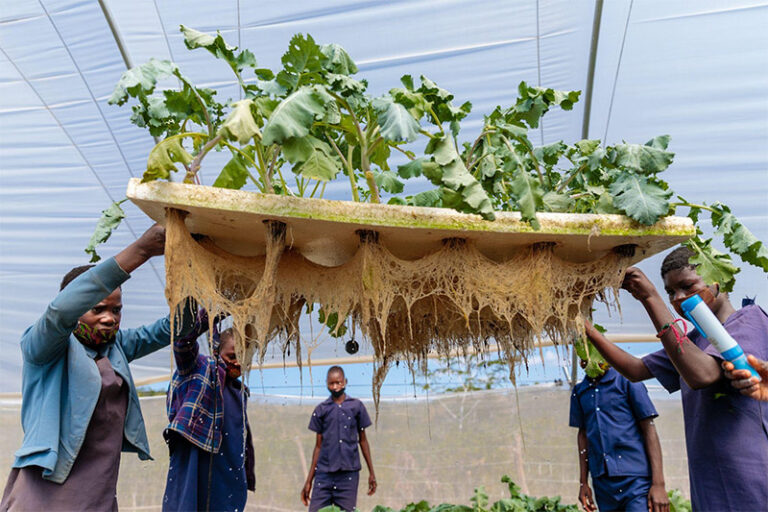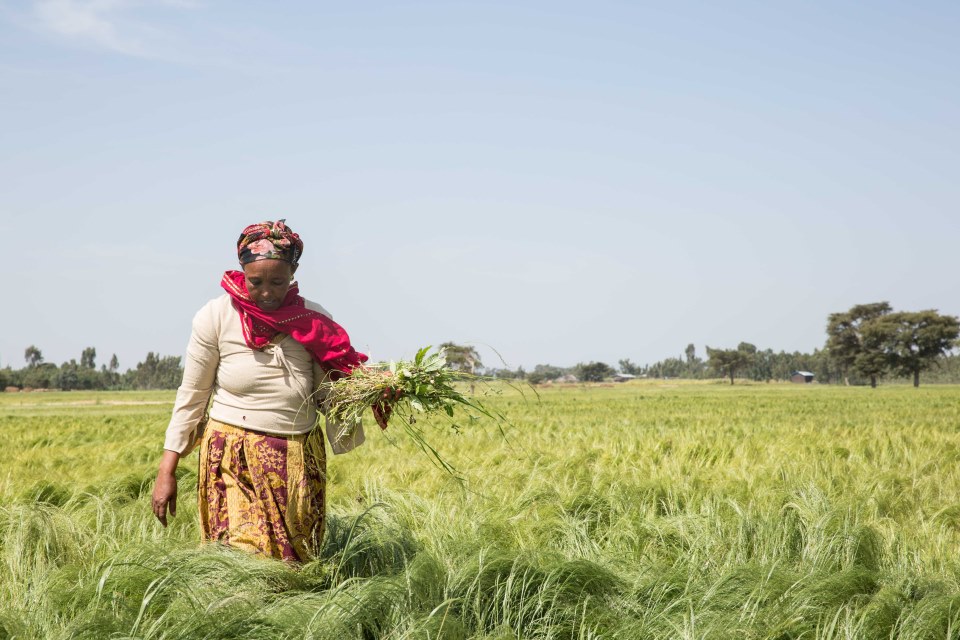Food Systems, Climate Change, and School Meals
On the heels of the UN Food Systems Summit +2 Stocktaking Moment, GCNF wanted to take a closer look at the relationship between food systems, the climate, and school feeding programs. Keep reading to learn more!
The Food Systems Challenge
Modern food systems face numerous challenges, including food insecurity, malnutrition, and greenhouse gas emissions. The current model heavily relies on fossil fuels for production, transportation, and processing, contributing significantly to greenhouse gas emissions and climate change. Deforestation and land-use changes for agriculture further exacerbate the problem, releasing more carbon dioxide into the atmosphere. Therefore, in order to form a more resilient and sustainable future, the transformation of food systems is imperative.
School Meal Programs: An Opportunity for Change
School meal programs play a pivotal role in addressing hunger and can also play a key role in addressing climate change. School feeding serves as an essential safety net for vulnerable children, ensuring they receive proper nutrition to support their growth and development. By improving access to nutritious foods, these programs combat malnutrition and improve overall public health.
In addition to reducing hunger, school meal programs contribute to human capacity development by supporting education, reducing hunger, and improving nutrition. They also can be structured to support the agriculture sector and smallholder farmers, create jobs and otherwise contribute to economic growth.
Similarly, school feeding programs can be “climate-friendly”, promoting “balanced diets, featuring plant-based foods, such as those based on coarse grains, legumes, fruits and vegetables, nuts and seeds, and animal-sourced food produced in resilient, sustainable, and low-GHG emission systems.” (1) Structuring procurement for school meal programs to require or at least favor food that is local, nutritious, and produced sustainably can catalyze innovation and drive needed food system changes.
Innovation in the Dairy Sector
Milk/dairy is a common food source throughout much of the world. According to FAO, “Approximately 150 million households around the globe are engaged in milk production. In most developing countries, milk is produced by smallholders, and milk production contributes to household livelihoods, food security and nutrition. Milk provides relatively quick returns for small-scale producers and is an important source of cash income.” (2)
“Dairy products have a range of nutritional and physical characteristics that make them an almost ideal complementary food” for children (3) and milk is a popular item in school menus: A 2020 survey found that 160 million children across 62 countries benefited from a school milk program—demonstrating this link. And yet milk presents multiple challenges as well, including its shelf life, food safety concerns, the cost of transport and handling of liquid milk, and the impact of livestock on the environment.
The dairy sector has been addressing these challenges. Pasteurization addressed the safety issue, for example, milk sterilized through the UHT (“ultra-pasteurization”) process has increased the shelf life of packaged liquid milk from a couple of weeks to six to nine months.
In recent years, great strides have been made by the dairy sector to reduce greenhouse gas (GHG) emissions and become a leader in the fight against climate change. From 2005-2015, North America increased milk production while reducing absolute GHG emissions, making the region’s GHG intensity for dairy products the lowest in the world. By 2017, a gallon of milk required 30% less water, 21% less land, and had a 19% smaller carbon footprint. Although this data represents just a single region, the successes seen in North America may be a path forward for other regions of the world.
In the face of climate change and its profound implications for food security, school meal programs present a unique opportunity to lead the charge toward sustainable food systems transformation. By prioritizing nutritious, climate-friendly meals produced locally and sustainably, schools can reduce their carbon footprint and inspire the next generation of environmentally-conscious citizens. As we invest in the well-being of our children and the future of our planet, collective efforts to reimagine the food systems around school meal programs can drive us closer to a more resilient and sustainable world for all.














No comment yet, add your voice below!